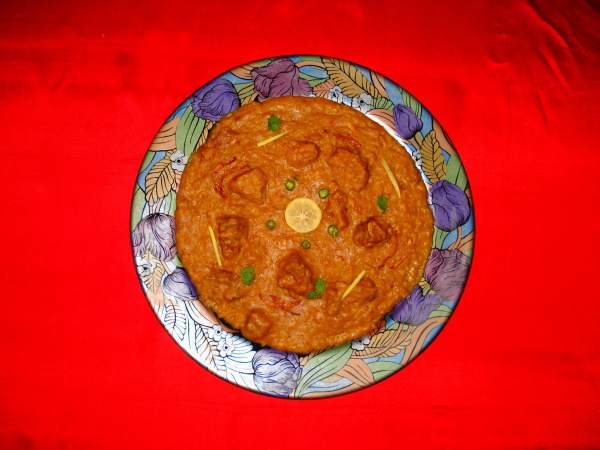Facts About Khichra
Khichra: A Delicious Cousin of Haleem
Khichra, also known as Khichda, is a delectable variation of the much-loved dish Haleem. This savory delicacy is especially popular among Muslims in the Indian subcontinent, particularly during Ashura of Muharram. The dish is a slow-cooked amalgamation of goat meat, beef, lentils, and spices, all simmered together to form a thick, flavorful paste.
Think of Khichra as the meatier counterpart to Khichdi, the classic rice and lentil dish. In Pakistan, you will often find beef Haleem and Khichra being sold by street vendors throughout the year, making it a beloved street food.
The origins of Haleem can be traced back to the Arabian dish called Harees. While both dishes share similarities, Haleem features ground meat, whereas Khichra uses meat cut into cubes. The earliest known recipe for Harees dates back to the 10th century in an Arabic cookbook named "Kitab Al-Tabikh." Arab soldiers brought Harees to Hyderabad, where it evolved into Haleem.
Khichra, on the other hand, is believed to have originated in Lucknow, India, as a means to provide famine relief during the construction of the Old Imambara. Over time, this hearty dish gained popularity and spread to various cities across the subcontinent.
While both Haleem and Khichra use similar ingredients, the cooking method distinguishes them. In Haleem, the meat is cooked until it completely blends with the lentils, creating a smooth consistency. In Khichra, however, the meat remains in tender, flavorful cubes.
It's worth noting that Khichra and Haleem are both meat-based dishes, whereas Khichri is a vegetarian dish made with rice and pulses or lentils. Whether you're savoring the meaty richness of Khichra or the comforting simplicity of Khichri, these dishes offer a taste of the rich culinary heritage of the Indian subcontinent.

 India
India